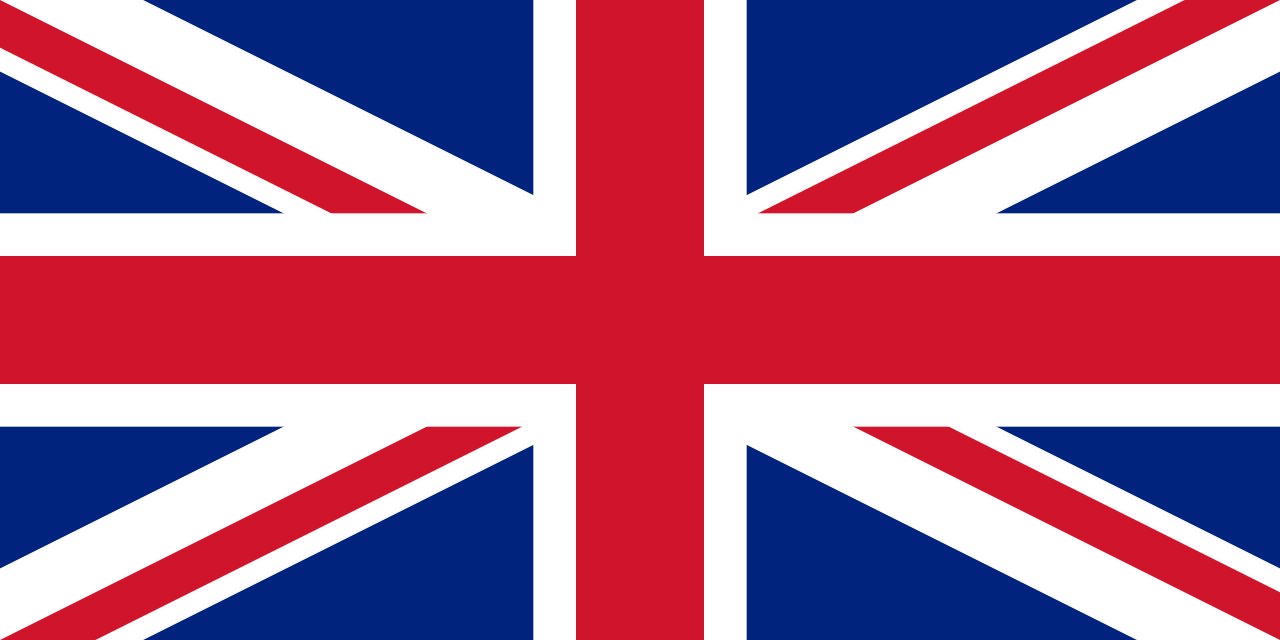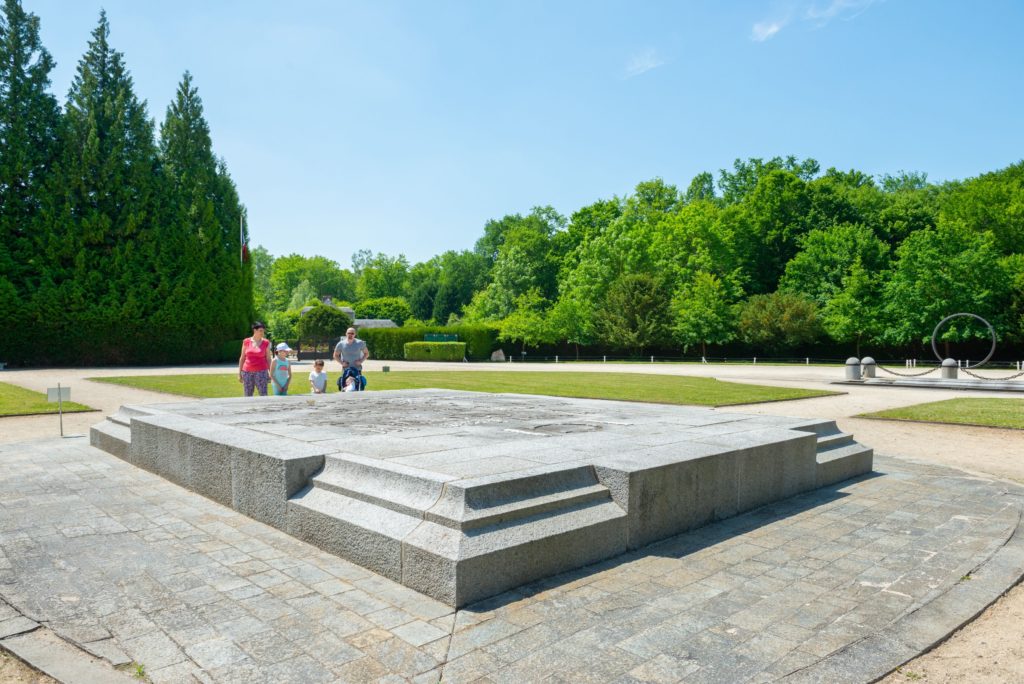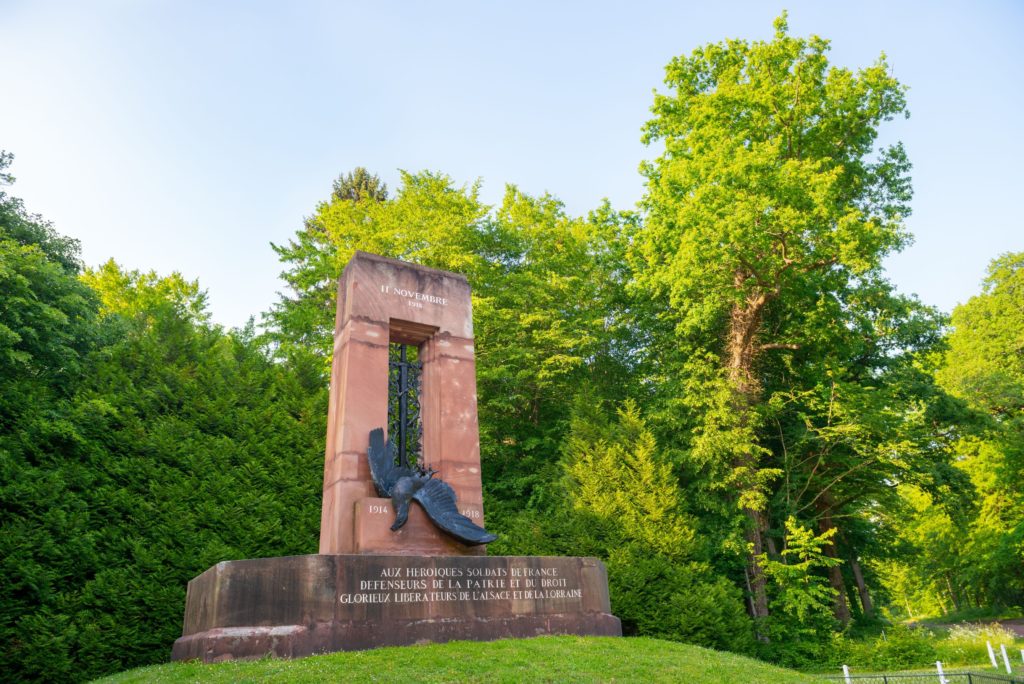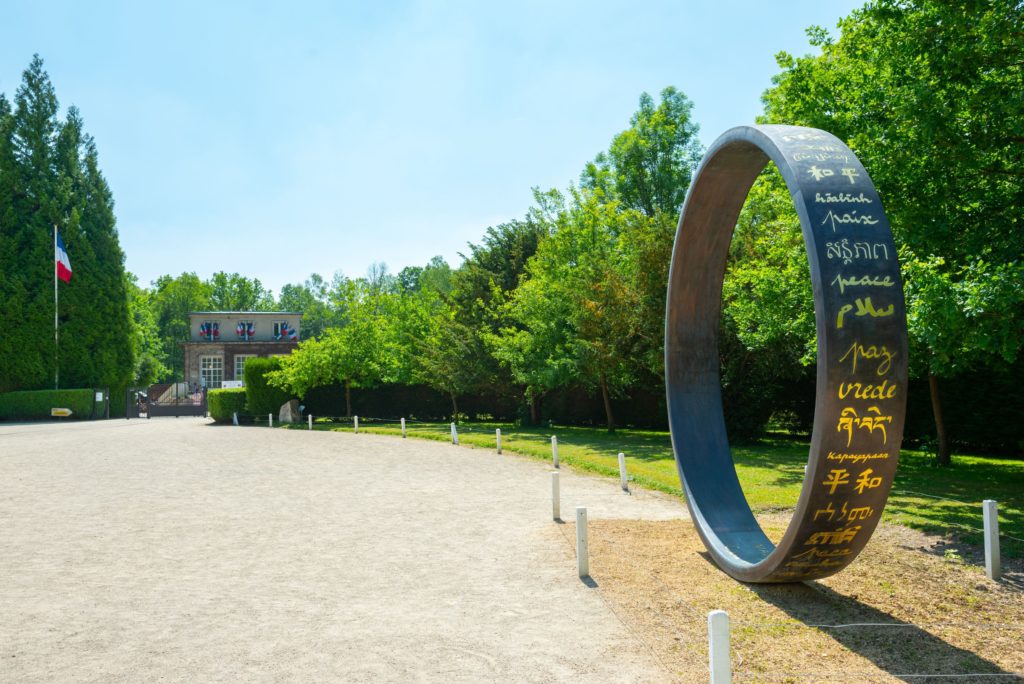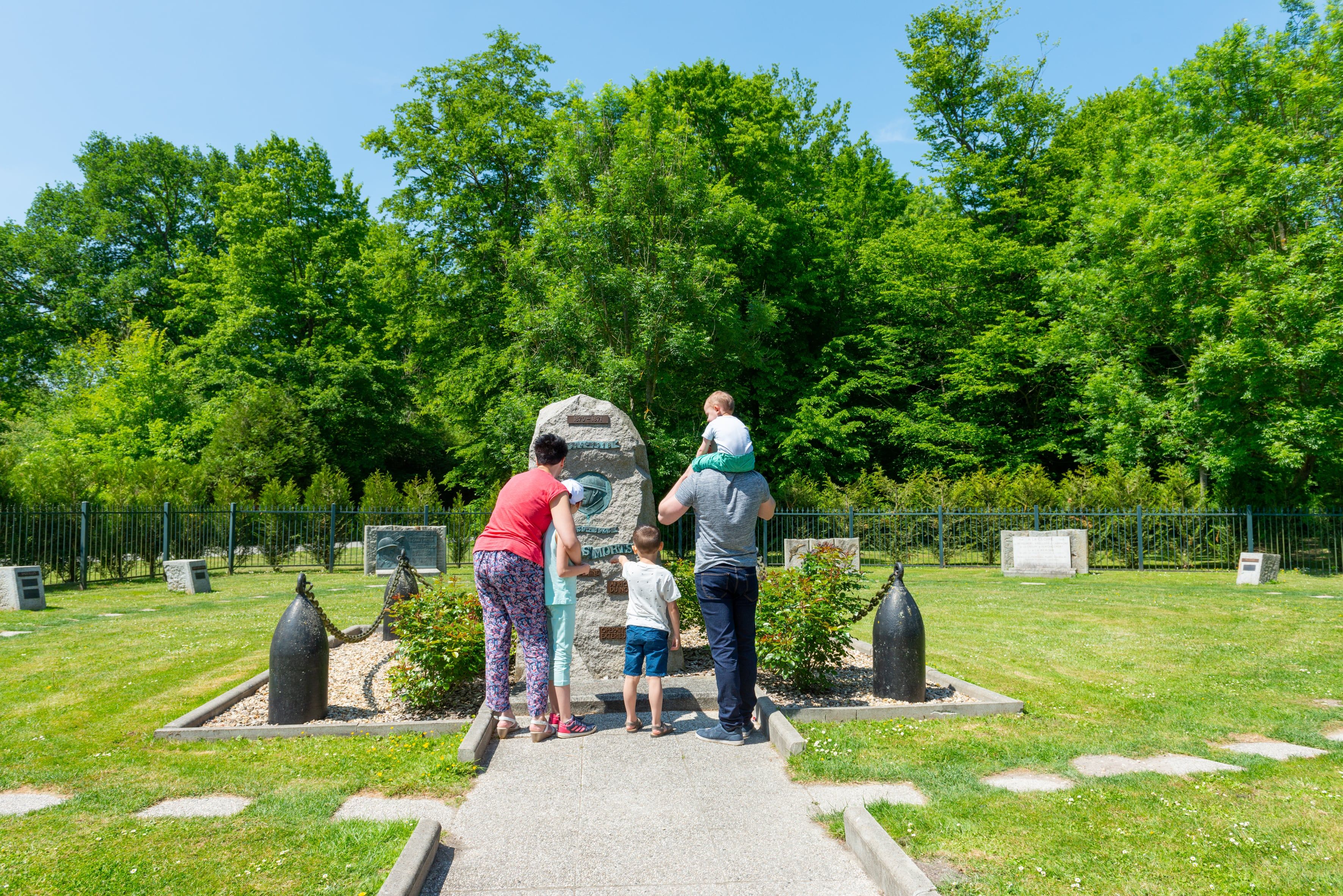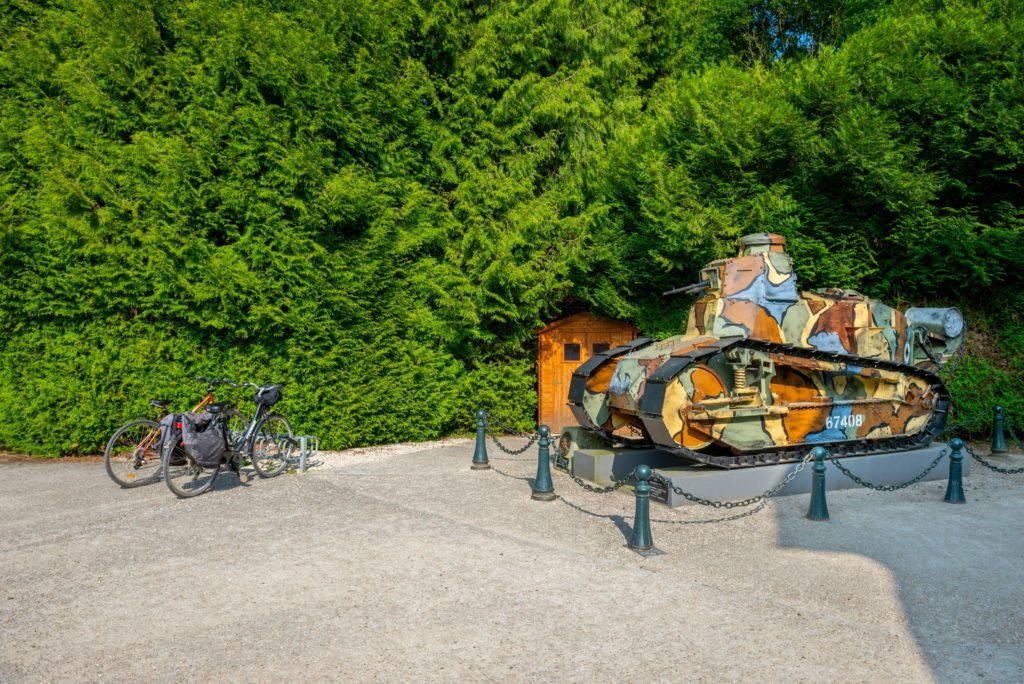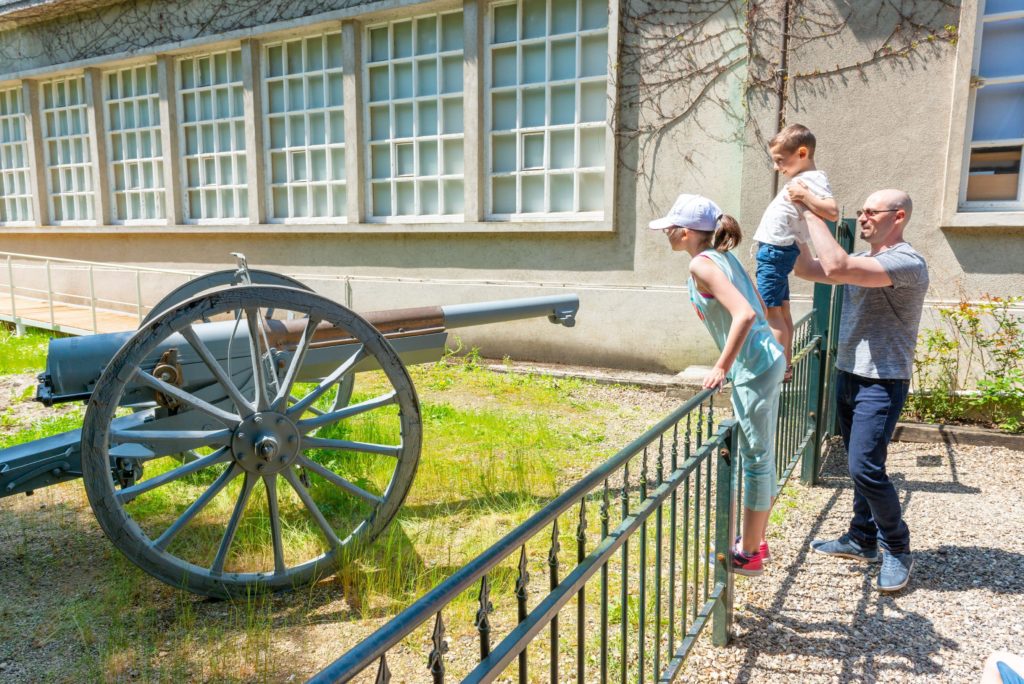Each Rethondes Clearing monument is dedicated to a hero, a victim or all the soldiers and civilians killed during the World Wars.
The Marshal Foch statue
The statue by Firmin Michelet in honour of the war hero Marshal Foch was inaugurated in 1937. The statue would be spared when Hitler had the clearing destroyed in June 1940. It was even protected within a wooden box during the carriage shelter’s demolition by dynamite. The British, French and Polish flags remind us that Ferdinand Foch was Marshal of Great Britain, France and Poland.
The Sacred Slab
Inaugurated along with the Alsace-Lorraine Monument, this slab is carved from the same Vire granite as the Tomb of the Unknown Soldier. Its inscription reads: “Here, on 11 November, the criminal pride of the German empire was vanquished by the free peoples it had sought to enslave.”
The Alsace-Lorraine Monument
Inaugurated on 11 November 1922, this work by the wrought-iron worker Brandt is dedicated to the French Army and commemorates the annexation of Alsace and Lorrain, German territories since the Franco-Prussian War of 1870. The monument portrays the German eagle being slain by the French Army.
The Peace Ring
Installed within the Armistice Clearing where the carriage once stood, this patinated-bronze ring rising 3.5 metres and weighing 1.5 tons was created by the artist Clara Halter. Bearing the word peace in 52 different languages, the ring symbolizes the alliance and unification of all peoples.
The memorial Garden
Before leaving the Armistice Memorial, take advantage of your visit to discover this space for reflection and meditation. Raised in memory of Augustin Trébuchon, the last soldier killed during WWI, this space pays tribute to all soldiers killed in battle since the Franco-Prussian War of 1870, including wars carried out abroad.
Cannons
The French 75-mm cannon was the first equipped with a hydraulic system preventing its recoil upon firing. This allowed for a much faster firing rate. While not quite as high-performance as the French 75-mm cannon, the German 77-mm artillery piece proved terribly destructive. Both sides suffered heavy casualties due to artillery fire.

